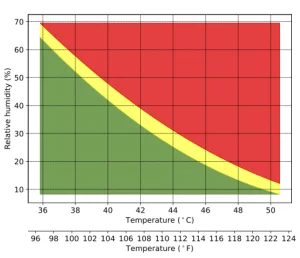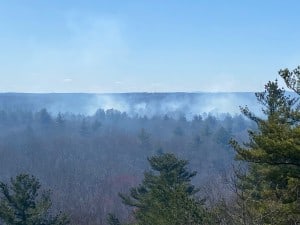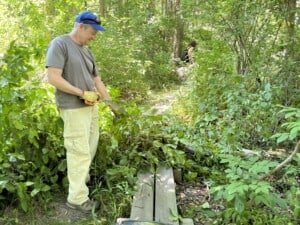What is Wet Bulb Temperature?
Wet bulb temperature (WBT) is a measure of heat and humidity that reflects the lowest temperature air can be cooled to by the evaporation of water. In layman’s terms, it’s the temperature reading on a thermometer covered by a wet cloth.
Unlike regular air temperature, wet bulb temperature takes into account both heat and moisture in the air, making it a more accurate indicator of heat stress on the human body.
When the wet bulb temperature is high, the body’s ability to cool itself through sweating is compromised. This can lead to a dangerous buildup of heat within the body, resulting in heat-related illnesses such as heat exhaustion or heat stroke. Understanding and monitoring WBT is crucial, especially during hot and humid conditions.
Impact on Health
Massachusetts, due to it’s humid sea-level climate, experiences high wet bulb temperatures during the summer months. Prolonged exposure to high WBT can be particularly harmful to vulnerable populations such as the elderly, young children, and those with preexisting health conditions. Symptoms of heat-related illnesses include dizziness, nausea, headache, rapid heartbeat, and confusion. In severe cases, heat stroke can occur, which requires immediate medical attention.
Checking Safe Temperatures Before Outdoor Activities
To ensure safety before spending time in the Blue Hills this summer, it’s important to monitor weather forecasts for heat alerts and understand the current wet bulb temperature. The chart below indicates how to calculate dangerous WBT using the current temperature and humidity levels.

Source: NHPR New Hampshire NPR: What’s a wet bulb temperature limit? https://www.nhpr.org/environment/2022-12-09/outside-inbox-whats-a-wet-bulb-temperature-limit
The most important thing you can do to stay safe is schedule strenuous activities for cooler parts of the day, such as early morning or late evening. Ensure you stay hydrated and take frequent breaks in shaded or air-conditioned areas.
By understanding wet bulb temperature and its effects, visitors in the Blue Hills can better protect themselves from heat-related health issues and enjoy outdoor activities safely.

















What is best to drink to keep hydrated in that kind of weather.
Here’s a handy link from the CDC about preventing heat illness: https://www.cdc.gov/niosh/mining/userfiles/works/pdfs/2017-126.pdf